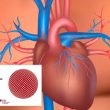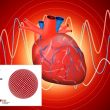Courtesy of Dr. Carlos Fava. Advanced peripheral vascular disease is frequently associated with cardiovascular events and amputation. It has been proven that mono-antiplatelet therapy (MAPT) offers some benefit (with either aspirin or clopidogrel), but there are scarce data on the role of dual antiplatelet therapy (DAPT) in these patients. Researchers analyzed 404 patients who received MAPT for...
Secondary Prevention: A Responsibility We Should Not Delegate
After coronary angioplasty, the use of drugs whose efficacy for the reduction of major events has been proven declines over time, which is associated with worse patient prognosis. Sometimes, without meaning to, we convey to patients the idea that, once the stent has been implanted, the artery is “cured” or that the only potential future...
Pre-TAVR Revascularization: Angiographic or Physiological?
In patients undergoing transcatheter aortic valve replacement (TAVR), fractional flow reserve (FFR) guided revascularization is associated with favorable results compared against the traditional angiography guided revascularization. Given the complete lack of randomized studies, this observational study is the best we have to decide how to guide revascularization in patients with symptomatic severe aortic stenosis undergoing...
AHA 2019 | COMPLETE: Complete Revascularization Is Superior since It Treats Other Vulnerable Plaque
This COMPLETE sub-study using optical coherence tomography (OCT) showed the prevalence of vulnerable lesions other than the culprit which should provide a physiopathological explanation of the benefit of complete revascularization observed in the original study. STEMI patients with multivessel disease will benefit from complete revascularization in terms of reduced cardiovascular death and repeat MI according...
Microvascular Angina Could Have Risk Gradients
This study recently published in JACC paves the way to identifying higher risk patients among those with no epicardial coronary artery disease (CAD) that present angina symptoms. Evidence of coronary spasm and increased microcirculation resistance in patients with angina (but with no epicardial obstructive CAD) is associated with increased risk of adverse cardiac events. AT...
ESC 2019 | CLARIFY: Symptoms Predict Risk Only in Patients with Prior MI
The 5-year follow up of patients with chronic stable angina (or as the guidelines currently call it “chronic coronary syndrome”) indicate the risk of cardiovascular death or non-fatal MI is quite low, but risk factor control is still fairly poor. This information comes from the CLARIFY study, presented at ESC 2019 and published simultaneously in...
ESC 2019 | EVOPACS: Evolocumab to Reduce Cholesterol in Acute Coronary Syndromes
Eight weeks of treatment with evolocumab added to a regimen of high-intensity statins in patients with acute coronary syndrome reduced significantly LDL cholesterol levels and was safe, compared with statins + placebo, according to the EVOPACS study presented last Saturday at the European Society of Cardiology (ESC) Congress 2019 Scientific Sessions in Paris and simultaneously...
ESC 2019 | HOPE 4: Overcoming Obstacles to Treat Risk Factors in Developing Countries
Exhaustive intervention carried out by healthcare non-medical healthcare professionals with the support of community members resulted in a significant reduction of systolic blood pressure, LDL cholesterol levels and CAD risk in patients of Malaysia and Colombia, according to this study presented at ESC 2019 in Paris and simultaneously published in Lancet. This intervention translated into...
How to Prevent Pharmacological Overtreating in the Elderly
Cardiovascular risk increases dramatically with over the years, which almost inevitable leads to treating the elderly with statins, based on risk. To prevent over treatment, we need to identify fragile patients (bed-ridden or with dementia), whose condition might make this treatment futile on the one hand, and on the other hand, patients who regardless their...
The Most Relevant Articles of 2018 in Peripheral Vascular Disease
1- What’s New in the European Guidelines on Peripheral Arterial Disease Since the last version of the European guidelines on the diagnosis and treatment of peripheral arterial disease in 2011, there have been many trials and registries that warrant guideline adjustments in many aspects. The first novelty is the teamwork that gave way to these...









